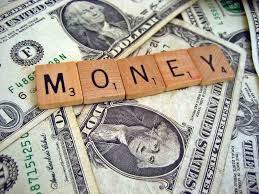Money can be defined as a stock of assets which can be used to make transactions. It has many functions. It is the most liquid asset. Liquidity refers to the ease with which money can be used to buy goods and services. Money is essentially of two types:
- Fiat Money
- Commodity Money
Fiat money refers to that money that has no intrinsic value and it is only money due to law. Whereas, when a commodity is used to purchase goods and services it is called commodity money. It has intrinsic value. Economies that use gold as commodity money are called Gold Standard economies.
Three main functions of money are:
- Store of Value-money as a store of value means it can be used as a means of transferring purchasing power from the present to the future. As the prices increase, future purchasing power falls and money as a store of value falls.
- Unit of Account- money as a unit of account means that it gives us terms in which prices can be quoted and debt recorded. Money is a yardstick by which we measure all economic transactions.
- Medium of Exchange- money is used as a means of purchasing goods and services.
Money supply refers to the total quantity of money available in the economy. The control over money supply is called Monetary Policy and is delegated by the Central Bank. The Central Bank of India is called the Reserve Bank of India. It is the apex banking institution of the country that controls and delegates the functioning of all other banks. It controls the supply of money in an economy through open market operations. Open market operations refer to the sale/ purchase of government bonds to and from the public. When the central bank wants to reduce money supply in the economy, it exercises ‘contractionary’ open market operations wherein the central bank sells bonds to the public. This reduces the money in circulation in the economy.
The Quantity Theory of Money (QTM) explains one of the most important equations with respect to money. The equation is given as:-
MV=PT
Where,
M: Stock of money
V: Transaction velocity of money- the number of times a dollar bill exchanges hands
P: Price Level
T: total number of transactions that take place in an economy during a given period of time
Since ‘T’ is difficult to ascertain we usually replace it with ‘Y’ i.e real output. This is because the amount of goods produced during in a given period of time is approximately equal to the amount of goods that are bought and sold. Thus,
MV=PY where, V now is the income velocity of money-the number of times a dollar bill enters a person’s income.
The quantity theory of money has three assumptions:-
- The factors of production and the production function determine the real value of output.
- By holding velocity of money constant, the quantity of money is equal to the nominal value of output.
- The price is determined by the ratio of nominal output and real output
PY/Y=P
Now,
%change in M + %change in V = %change in P + %change in Y
Since V is constant, %change in V=0
Also, %change in P is essentially inflation rate. Thus, the QTM is also called the Theory of Inflation Rate.
The statement of QTM is as follows:
The quantity theory of money states, the central bank that supplies the money in an economy in effect controls the inflation rate. If the central bank keeps the money supply stable, prices remain stable, if the central bank increase money supply, prices increase rapidly.





15 Comments. Leave new
Explained very well.
good one 🙂
Nice !
Nice article.
nice but looks like reading an economics book or something like that…
well described!
very well explained!
Very well described.
good description!
well explained
Well explained.. I was able to understand it easily though it’s a new topic..
Nicely explained.
Worth reading..!
Nice read 🙂
Very well written great efforts